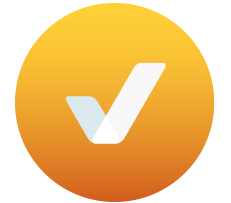Solar is Kind of a Big Deal
There’s a lot going on these days—seems like a good time for an update from across the country.
Did you know that on certain days of the year, California is powered by 50% renewable energy, and as much as 30% solar? When the 7th largest economy in the world cranks along just fine on what used to be considered a hippie pipe-dream, it’s kind of a big deal.

It’s progress like this that gives state leaders the confidence to lift the bar even higher. This year, California lawmakers will consider proposals to raise the renewables goal to at least 50%. To capitalize on this opportunity, we’ve brought on a new colleague dedicated to making this happen.
Not to be outdone, the Hawaii Legislature just passed a bill setting the state on track to be 100% renewable by 2045. That’s a really big deal.
Your Right to Solar Financing
In a handful of states, third party power purchase agreements—currently the most popular financing structures for rooftop solar—are not allowed. That’s right—the utility monopoly is so strong that they have legal protection preventing people from financing a solar system on their own rooftops. If this sounds like an unconscionable abridgment of basic private property rights, free market principles, and all that’s righteous in the world, you are in good company—the Georgia Legislature agreed. All of them. HB 57, the ‘Solar Power Free Market Financing Act of 2015, passed unanimously and was just signed by the Governor into law. It’s a big deal!
And it’s part of a wave of interest from throughout the Southeast in expanding solar financing options. North Carolina is working to bring the same options to its customers for the first time. While the policy has diverse support from all ends of the political spectrum, it’s faced opposition from North Carolina’s major utility, Duke Energy. Now keep in mind the energy giant is simultaneously investing $225 million in a company that does exactly this kind of financing outside of the state, while trying to keep its captive customers from accessing the benefits inside the state. Kind of gets your dander up, don’t it? It’s high time to give North Carolinians access to the same competitive energy options that Duke is investing in elsewhere.
Florida is also looking to clear the way for third-party solar financing options. Bills to change this went nowhere in the legislature, as per tradition. So a grassroots citizen’s coalition is taking matters into their own hands and working to put the issue on the ballot.
Freedom is on the move, people.
Postcards
According to the New York Times, Hawaii’s impressive progress on renewables is a postcard from the future. But with NextEra Energy wanting to buy the Hawaiian Electric Company, what’s the future of renewables in Hawaii? We decided to send a postcard from Florida, where NextEra’s subsidiary, Florida Power and Light, is something less than a bright light in the Sunshine State. If NextEra wants to show that it can lead on solar in Hawaii, we think it has the perfect opportunity to start… in Florida.
Fair Credit for Solar Power
We continue working around the country to make sure that people who install solar get fair value for their generation, and that markets for distributed solar generation continue to thrive. In Massachusetts and Nevada, stakeholders are working hard to expand access to this critical solar right in order to keep solar shining in those states. Conversations about the future of the program are also underway in New Mexico, and Colorado. And in California, we are proud to stand with leaders of the social and environmental justice community in calling for the state to build on its solar success by preserving its successful net metering program and continuing to explore new ways to connect more Californians with the safer, healthier, affordable solar power that we all want.
Community Shared Solar
Speaking of helping more consumers plug into clean energy, that’s what a coalition of more than 55 organizations is working together to accomplish in New York. State regulators are now working to establish an innovative Shared Renewables program to overcome traditional barriers to solar access. If approved, this program would empower renters, low-income families and plenty of other New Yorkers to directly participate in and benefit from the state’s growing solar economy—all while speeding the transition to a sustainable and reliable energy system. Now that’s powerful.
Looking for a website dedicated to tracking shared renewables policy progress across the U.S.? We have one, and we’ve just re-vamped it. Check out our new and improved Shared Renewables HQ.
Grid Integration
The job of integrating large amounts of renewables on the grid is made cheaper and easier by expanding the size of (or co-operation between) grid operators. The greater the geographic diversity, the less impact a cloud or a spike in demand has on the system. That’s why Arizona Public Service’s announcement of its intent to join the Energy Imbalance Market and Pacificorp’s to potentially join the California System Operator is such a big deal. Thanks, APS and Pacificorp.

